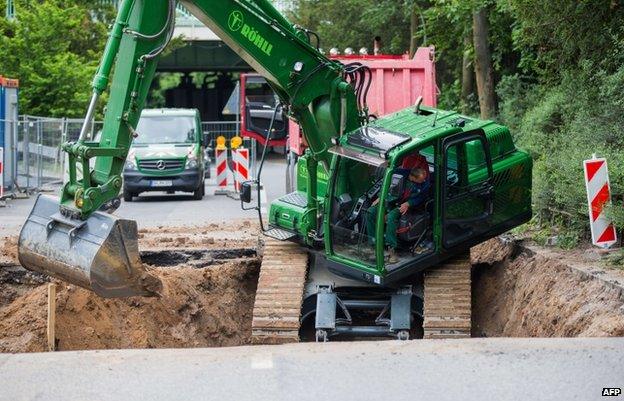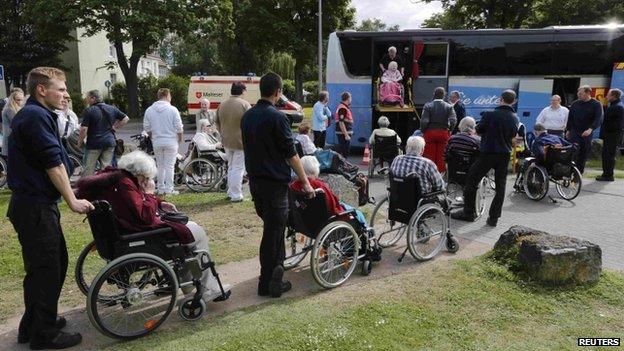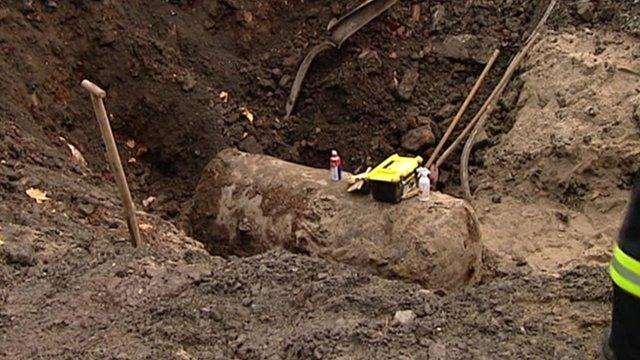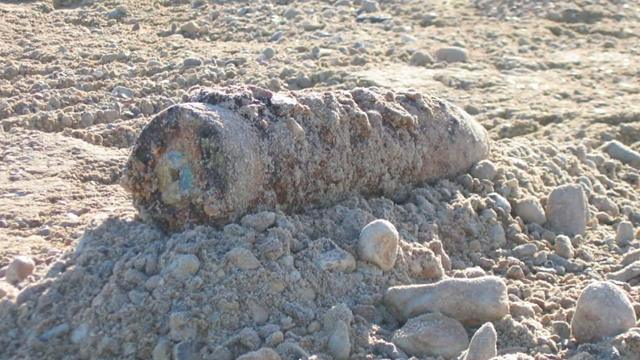Germany WW2 bomb find prompts Cologne's biggest evacuation
- Published

The one-tonne device was found near Muelheim bridge
Some 20,000 people in the German city of Cologne have been forced to leave their homes as authorities defuse a one-tonne bomb from World War Two.
Schools and kindergartens - as well as the zoo - remained closed during the city's largest post-war evacuation.
About 1,100 residents of a retirement and disability centre in the Riehl area were among those taken to safety.
It is not unusual for unexploded bombs to be discovered in Germany. Allied bombers targeted Cologne in WW2.
The deactivation of the one-tonne device, which was found near Muelheim bridge crossing the Rhine river, was planned for Wednesday afternoon.

Welfare workers helped move disabled pensioners to a nearby nursing home

City officials said in a statement that during this time the river would be closed for shipping and the airspace would also be closed.
The bomb was found on Friday during preparations for the construction of a pipeline, according to local media.
It is believed to be an American design and was buried 5m (16ft) underground.
A 1km exclusion zone was set up around the spot where the device was found.
Six hundred of the residents evacuated on Wednesday morning were said to be in need of care.
Otto Ludorff, the head of the care home affected, said the evacuation placed a "physical and emotional burden" on its residents, whose average age was 86, according to German news channel n-tv.
Hundreds of tonnes of unexploded ordnance are discovered in Germany every year.
The explosives are usually defused safely, though in 2010 three bomb-disposal officers were killed during an attempt to make a bomb safe.
In December 2011, the biggest bomb disposal operation in Germany since 1945 was mounted in Koblenz to defuse two bombs from World War Two found in the riverbed of the Rhine.
- Published28 August 2012

- Published3 November 2013

- Published28 February 2014
